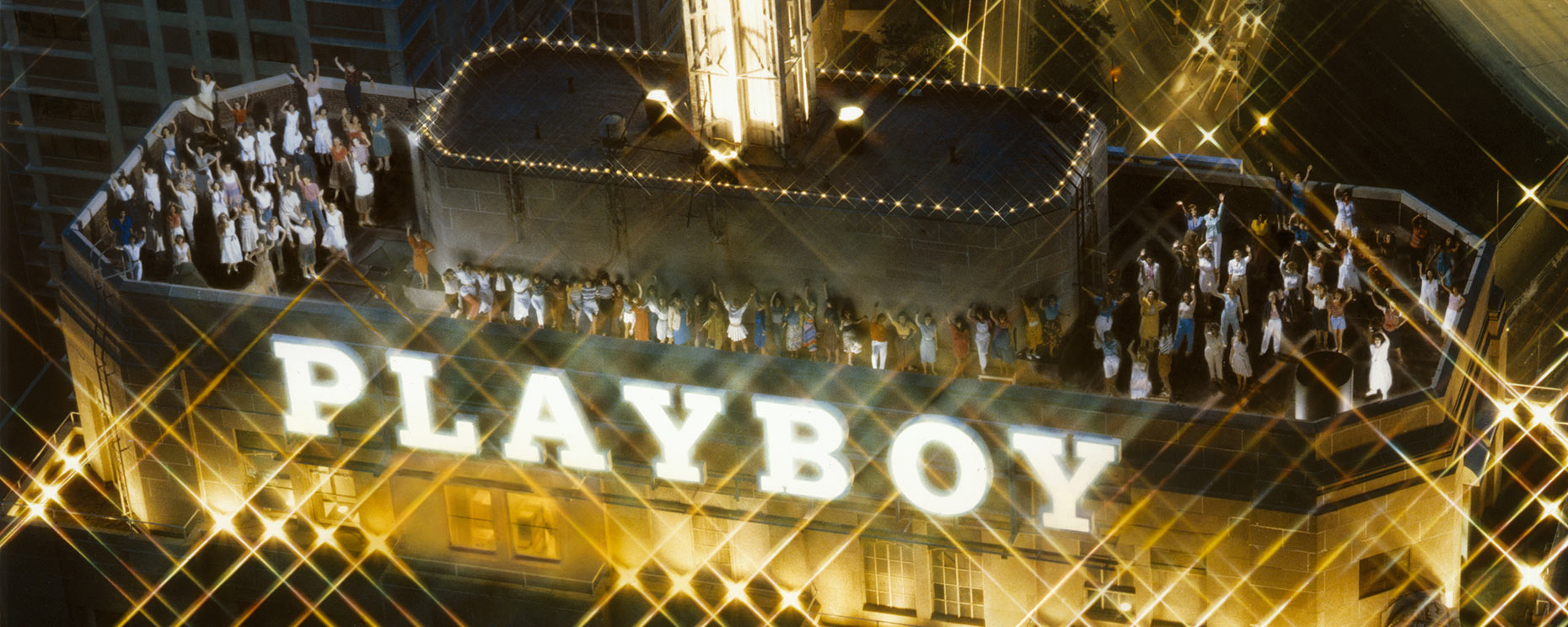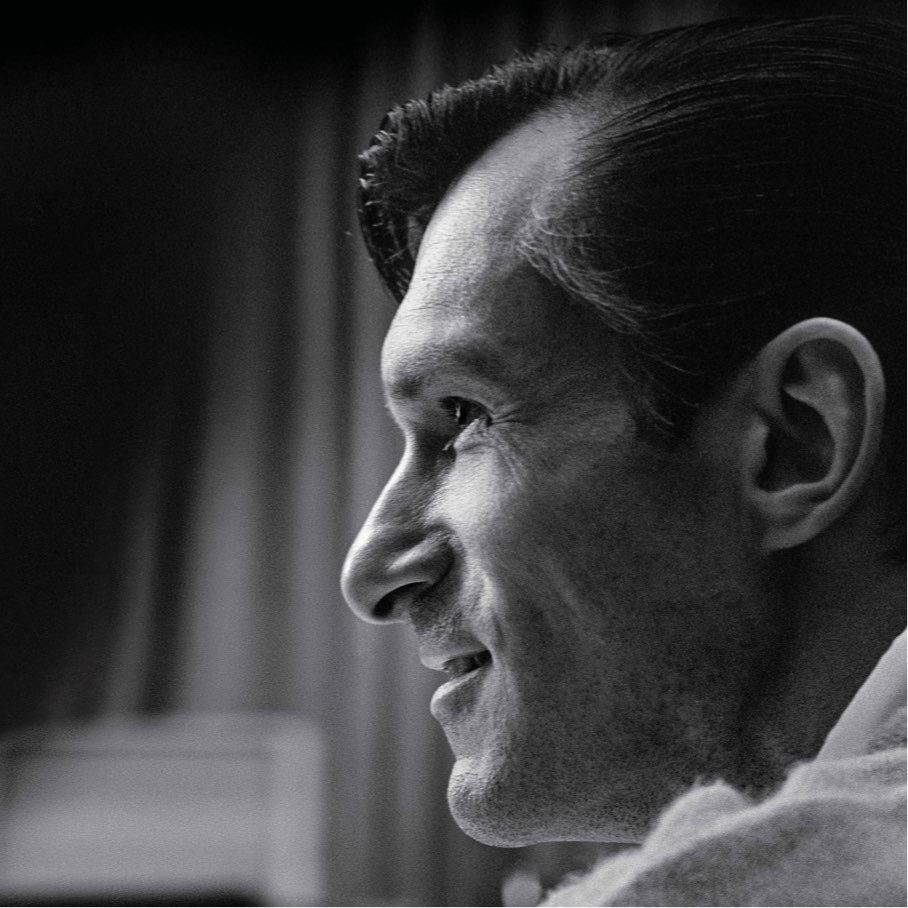Our Story

Founded by Hugh M. Hefner in 1953, Playboy has been a tastemaker, an arbiter of style and a vanguard for political, sexual and economic freedom for almost 60 years. Headquartered in Beverly Hills, California, PEI publishes Playboy Magazine in the United States and abroad and creates content for distribution via television networks, websites, mobile platforms and radio. Playboy consumer products are sold in more than 180 countries. Playboy’s iconic events at the world’s most influential happenings provide our partners with unparalleled access to high-end pop culture. The Rabbit Head Logo, one of the top 20 brands in the world, and ranked amongst giants such as Nike, Disney and McDonald’s, continues to fuel the future of Playboy and our global expansion.


About Our Founder
As the Founder of Playboy Enterprises, Inc. and Editor-in-Chief of Playboy Magazine, Hugh M. Hefner profoundly influenced society for more than 60 years. Founded by Mr. Hefner in 1953, Playboy Magazine remains the world’s best-selling men’s lifestyle magazine. It has inspired a media empire and one of the most recognizable brands in history.
Following graduation from high school in January 1944, Hef (a nickname preferred since adolescence) joined the Army and subsequently earned his bachelor’s degree in two and a half years at the University of Illinois at Urbana-Champaign by doubling up on classes while drawing cartoons for the Daily Illini and editing the campus humor magazine Shaft. He then took a semester of graduate courses in sociology at Northwestern University. Hefner was born in Chicago on April 9, 1926, the eldest son of conservative Protestant parents, Glenn and Grace Hefner. He attended Sayre Elementary School and Steinmetz High on the West Side of Chicago, where he was no more than an average student, despite a genius IQ of 152. He distinguished himself instead with his extracurricular activities: founding a school paper, writing, cartooning and serving as president of the student council where he championed student causes.
In June 1949, Hefner married a classmate, Mildred Williams. Their 10-year marriage produced two children: Christie in 1952 and David in 1955. In January 1951, he landed a promising job as a promotion copywriter at Esquire at $60 a week. When Esquire moved its offices to New York, his request for a five-dollar raise was denied and he decided to stay behind and start a magazine of his own. Convinced there was a market for a sophisticated men’s magazine that would reflect the views of the post-war generation, Hefner raised $8,000 from friends and family to invest in his venture, including $1,000 from his mother and $600 of his own money borrowed from a bank using his apartment furniture as collateral.
The first issue of Playboy Magazine, which featured the now famous calendar photo of Marilyn Monroe, was produced on a kitchen table in his south side apartment. On the newsstands in December 1953, it carried no cover date because Hefner was not sure when or if he would be able to produce another. But the first issue sold more than 50,000 copies, enough to pay for the paper and printing costs and to finance another issue. Thereafter, Hefner never doubted that the magazine would be a success.
“Life is too short to be living somebody else’s dream.”
At the start of the new decade, Hefner began to live out the “good life” depicted in the pages of his publication. He hosted the television show Playboy’s Penthouse, purchased the Playboy Mansion, and opened the first Playboy Club in Chicago. Throughout the Sixties, Hefner and Playboy became what Chicago columnist Bob Greene has called “a force of nature.” The magazine became the largest-selling, most influential men’s magazine in the world.
By 1971, when Playboy Enterprises went public, the magazine was selling over seven million copies a month, there were 23 Playboy clubs, resorts, hotels and casinos with more than 900,000 members worldwide. The company’s assets included book publishing, merchandising, a modeling agency, a limousine service, a record label and a TV and motion picture company.
In 1971, he established a second residence in Los Angeles with the acquisition of Playboy Mansion West. In 1975, Hefner decided to make Los Angeles his permanent home, reflecting the extent to which Hollywood movies had influenced his dreams and aspirations as a boy. In 1980, Hefner championed the reconstruction of the Hollywood sign, then in serious disrepair, and was honored by a star on the Hollywood Walk of Fame for his efforts. In saving the sign, Hefner referred to it as “Hollywood’s Eiffel Tower.” The Hollywood Chamber of Commerce honored him further with its first Annual Hollywood Hall of Fame Award as Outstanding Citizen of the Year. In 2010, Hefner again came to the rescue of the sign, making a sizable private donation to prevent developers from building mansions behind the “H” of the iconic Hollywood sign. Darlings of the Hollywood creative community, Hefner and Playboy produced several motion pictures including Roman Polanski’s Macbeth and Monty Python’s first film, And Now For Something Completely Different.
Hefner was married on July 1, 1989 to Kimberley Conrad, Playboy’s 1989 Playmate of the Year. They had two children: Marston Glenn in 1990 and Cooper Bradford in 1991. The Hefners separated in the late 1990s and, after their sons moved on to college, divorced in early 2010.
Frequently interviewed by major news and entertainment media the world over, in-depth profiles of Hugh Hefner have appeared in publications such as Esquire, The New York Times, The Los Angeles Times, Time Magazine, The Times of London and Vanity Fair. Recent profiles on Hefner include a 2008 biography written by Steven Watts entitled Mr. Playboy: Hugh Hefner and the American Dream; Taschen’s Hugh Hefner’s Playboy; Hugh Hefner: Girlfriends, Wives and Centerfolds, an E! True Hollywood Story; Playboy 2000-The Party Continues; and The Girl’s Next Door. In September of 2009, Hugh Hefner: Playboy, Activist and Rebel, a documentary focusing on Hefner’s humanitarian efforts, premiered at the Toronto International Film Festival. In October 2012, the History Channel premiered a 2-hour documentary special detailing how Hugh Hefner’s magazine became a worldwide empire and significant influence in the shaping of society’s attitudes towards sexuality and civil rights.
The recipient of a number of awards for his contributions to society in general and the publishing industry in particular, Hefner’s awards include the 1996 International Publishing Award from the International Press Directory in London, induction into the Hall of Fame of the American Society of Magazine Editors in 1998, and induction into the New York Friars Club in 2001 as an honorary Friar. January of 2002 brought Mr. Hefner back to New York where he received the Henry Johnson Fisher Award, the highest honor of the Magazine Publishers of America. In March 2002, Hef was inducted as an honorary member of the Harvard Lampoon, which named him “Harvard Lampoon’s Best Life-Form In The History Of The Universe.” In 2008, Spike TV honored Hef with their Guy’s Choice “Alpha Male” lifetime achievement award. In early 2009, Hefner was an honored guest at the 59th Annual San Remo Music Festival in San Remo, Italy, a hugely popular event televised throughout Europe.
A lifelong patron and benefactor of the film world, Hefner was a major contributor to film courses and programs at UCLA and USC. He was also a sponsor of the acclaimed American Cinema series on PBS. Hef personally endowed a course in Censorship in Cinema at USC. He was honored in formal ceremonies at USC for his lifelong dedication to film and his endowment of a chair for the Study of American Film at the University’s School of Cinema-Television.
Hef passed away on September 27, 2017 at the age of 91, holding the record for the longest serving Editor-in-Chief in American history. Hef has frequently been quoted as believing that the United States’ most important export is “the American Dream.”